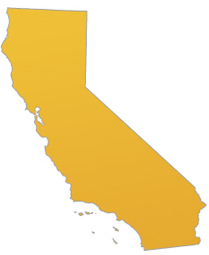In California, six members of the House introduced a bill that would allow farmers from the state to enter into the federal milk marketing system. The bill would let California dairy producers petition the Agriculture Department to join the rest of the country in their milk pricing arrangement. If the petition were filed, the Agriculture Department would then hold an industry vote. Two-thirds of producers must vote in approval of the change for the move to succeed.
 How did California end up with its own milk pricing system in the first place? Inequities and instability in the milk market led the California Legislature to establish its own pricing regulations back in 1935. Two years later, the federal government followed suit with a national system to provide some strength and consistency in the dairy industry for farmers, dairy processors and consumers.
How did California end up with its own milk pricing system in the first place? Inequities and instability in the milk market led the California Legislature to establish its own pricing regulations back in 1935. Two years later, the federal government followed suit with a national system to provide some strength and consistency in the dairy industry for farmers, dairy processors and consumers.
In 1935, California was isolated on the West Coast and located far away from major population centers in the country. Dairy markets at that time period were much more local in nature, and products were transported great distances. The geographical separation from the rest of the industry made it a logical choice for California to keep its own pricing at the time.
However, now that transportation has become more advanced and the industry has seen tremendous growth in other Western states, it may make sense for California to reconnect with the rest of the country. For years, farmers in the state have received lower prices for their milk. High input costs paired with lower milk prices make for challenging times. California is still the nation's leader in dairy, producing 41.5 billion pounds of milk in 2011. However, 105 farms went out of business last year, and that trend may continue without improved milk prices.
The California Department of Food and Agriculture (CDFA) is the regulatory agency in charge of balancing the needs of farmers producing milk, manufacturers processing the milk into dairy products, and consumers looking for reliable dairy products at reasonable prices. The department closely monitors conditions in the dairy marketplace and establishes the minimum price that must be paid to producers by processors. To learn more about the current California pricing system, visit the CDFA website.
 How did California end up with its own milk pricing system in the first place? Inequities and instability in the milk market led the California Legislature to establish its own pricing regulations back in 1935. Two years later, the federal government followed suit with a national system to provide some strength and consistency in the dairy industry for farmers, dairy processors and consumers.
How did California end up with its own milk pricing system in the first place? Inequities and instability in the milk market led the California Legislature to establish its own pricing regulations back in 1935. Two years later, the federal government followed suit with a national system to provide some strength and consistency in the dairy industry for farmers, dairy processors and consumers.In 1935, California was isolated on the West Coast and located far away from major population centers in the country. Dairy markets at that time period were much more local in nature, and products were transported great distances. The geographical separation from the rest of the industry made it a logical choice for California to keep its own pricing at the time.
However, now that transportation has become more advanced and the industry has seen tremendous growth in other Western states, it may make sense for California to reconnect with the rest of the country. For years, farmers in the state have received lower prices for their milk. High input costs paired with lower milk prices make for challenging times. California is still the nation's leader in dairy, producing 41.5 billion pounds of milk in 2011. However, 105 farms went out of business last year, and that trend may continue without improved milk prices.
The California Department of Food and Agriculture (CDFA) is the regulatory agency in charge of balancing the needs of farmers producing milk, manufacturers processing the milk into dairy products, and consumers looking for reliable dairy products at reasonable prices. The department closely monitors conditions in the dairy marketplace and establishes the minimum price that must be paid to producers by processors. To learn more about the current California pricing system, visit the CDFA website.








